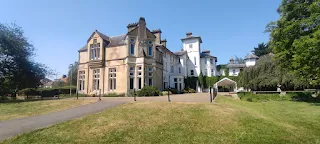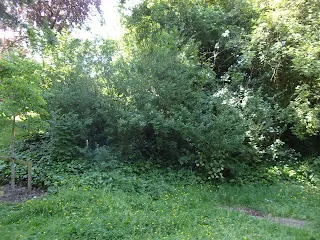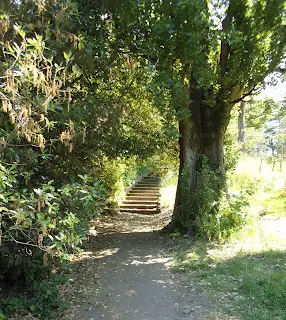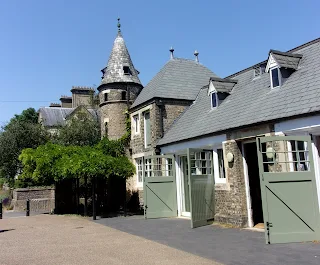This is my tourist attraction and book reviewing website, which also includes my writing work (and maybe a few other things too...) I am available for commissions. Copyright©Elaine Rockett
Monday, 4 September 2023
I'M MOVING INTO YOUTUBE VIDEO MAKING!
Sunday, 3 September 2023
THE SMUGGLER'S GIRL by JENNIE FELTON
by
JENNIE FELTON
THE BLURB:
Cecile has been raised to a life of privilege at Polruan House, by her widowed father and aunt. Now she's of age, they are determined that she make a proper match, but Cecile's heart belongs to their coachman, Sam- most definitely not suitable marriage material.
When Sam turns to his friend, smuggler Zach carver, for help eloping with Cecile, Zach tells of a recent encounter with Lise, a beautiful but poor girl in St Ives, who is the mirror image of Cecile.
And so a daring plan is born to briefly swap the girls. But bringing Cecile and Lise together will uncover an astonishing family secret of a bold escape from a loveless marriage, a treacherous shipwreck and a sister lost to the sea long ago.
THE REALITY:
Penzance, St Ives, Marazion, Cambourne, Mount's Bay... These are all parts of the area of Cornwall I shall be seeing soon, as I'm going to be visiting there. It was a bit of a coincidence that I read this book at exactly this time, as they all get mentioned (although the novel is set in a fictional town).
Featuring (spoiler alert!) a long-lost twin sister, the theme of identical twins is something that's frowned upon by a certain magazine in its list of guidelines for the submission of short stories. Why on earth is that? It's as viable a theme as any, and its use in this story made for a poignant read, with cleverly crafted sister characters, whose personalities clearly reflected their different upbringings. I did like that this novel had a good mix of good and bad characters, and I liked that sometimes you didn't quite know who possessed true nasty character traits and who was about to redeem themselves, as in the case of (another spoiler alert!) Aaron and Godfrey. Sometimes things weren't quite as they seem throughout, and this made for an exciting read. The historical feel for the area really came to life through the accents of the working class mothers, and maternal natures really shone through as a recurring theme throughout this read- especially Marguerite's, whose back tale was dramatic but reassuring. I did wonder, however, if the idea behind this novel came from the modern television adaption of Poldark- a heroine with long, flowing red locks? Another hero (Jean- Claude) with a scar down his face? Hmmm...
Although I struggled to start this novel (timing), it must have had something going for it as I flattened it in two days. I enjoyed the evocative way the area was depicted, liked the way the differences between the classes were described through food and clothing and loved reading about the smugglers, hiding places and certain pilfered trophies. I also liked that happy endings seemed to abound for the “goodies” and that the addition of religion soothed rather than jarred (isn't that what religions are supposed to do?) But the one character who stood head and shoulders above the rest was the wicked Cordelia- every book needs a villain and I'm glad the main protagonist here was a woman, although there were clues as to her nature throughout. A nod to being a woman who was undoubtedly in a man's world at the time (18th century), I like how she rebelled and set herself free from the mould that was set out for her, not necessarily keeping her family happy. Everybody likes a renegade! But one as wicked as this? She made for good copy, but I'm glad she met with a dramatic comeuppance. Read it and see what I mean for yourselves!
Wednesday, 16 August 2023
MISS ELAINEOUS VISITS STEPHENS HOUSE & GARDENS...

XXXXX
X
Tuesday, 1 August 2023
BUTLIN'S: 75 YEARS OF FUN! by SYLVIA ENDACOTT and SHIRLEY LEWIS
THE BLURB:
After successfully developing a series of funfairs, Billy Butlin progressed to opening holiday centres and hotels across the UK to provide families with an inexpensive but entertaining holiday. Over the years the centres first expanded and then declined in number due to changes in our preferences for types of holiday. Now boasting spa hotels, the resorts are very different from the chalets of yesteryear. However, the original slogan “Our True Intent is all for Your Delight” is fondly remembered by all of the original holidaymakers, whether they enjoyed one trip to a holiday centre or still make an annual pilgrimage with their families.
This nostalgic selection of images, many published here for the first time, illustrates the history of the various camps and hotels, including all of the things we associate with this most British of establishments. From Redcoats to water worlds, and from the Glamorous Grandmothers competitions to National Talent contests, this book provides an enjoyable and nostalgic trip down memory lane for all who know and love Butlin's, allowing us a glimpse into the social history of this quintessential British holiday.
THE REALITY:
I bought this as, at the time I was chasing after this book below, which is named FILEY- Thanks for the Memories, which raised its head on eBay...
This book was only a few quid and did what it said on the tin, which was provide me with a wonderful selection of photographs of all nine of the camps (I've visited seven), plus its Butlin's hotels and overseas resorts. I also learnt some new things; such as Billy Butlin owning smaller resorts- mostly in Cornwall- which were called Freshfields, and were part of his Small Centre Division. I also learnt about the success of School Venture Weeks, where Butlin's hosted school and youth visits. Kids could even gain nationally recognised certificates at these times- cycling proficiency and learning to swim being only two of many skills on offer, and they could also participate in the Duke of Edinburgh's Award Scheme. I know a fair bit about Butlin's, so it was nice to find out more- and I wish Billy's revolving Top of the Tower Restaurant, which was 150 metres high in the sky at the top of the BT Tower in London still existed- I'd just have to pay it a visit!
My only gripe was that the print was very small. No, I don't have problems with my eyes, thankfully, but it made reading the book tedious. The best thing was the wonderful selection of photographs. A must for any Butlin's fan wanting a trip down memory lane.











































.jpg)





